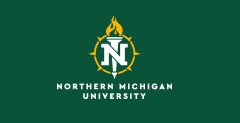Date of Award
5-2015
Degree Type
Thesis
Degree Name
Master of Science
Department
Biology
Program
Biology (MS)
First Advisor/Chairperson
Dr. Jill Leonard
Abstract
Avian botulism type E has caused large-scale bird and fish die-offs on the Great Lakes annually since 1998, and continues to threaten breeding and migratory waterbirds in the region. From 2010 to 2012, several northern Lake Michigan beaches were monitored for avian mortalities by National Park Service, Common Coast Research and Conservation, and U.S. Geological Survey personnel, partners, and volunteers. Bird carcasses were collected and tested for the presence of botulinum toxin type E (BoNT/E) at the USGS National Wildlife Health Center. I compare the prey composition and prey sizes consumed by the birds that were collected. Additionally, I examine the diets of culled double-crested cormorants (Phalacrocorax auritus) from three breeding colonies on northern Lake Michigan during the 2012 breeding season to use as BoNT/E-free references. Round gobies were found in 86% of the BoNT/E-positive birds, 76% of the BoNT/E-negative birds, and 94% of the BoNT/E-free cormorants examined in this study. The grand mean total length of gobies consumed by bird species ranged from 70.82 ± 3.42 mm in horned grebes (Podiceps auritus) to 120.60 ± 11.83 mm in ring-billed gulls. There were significant intraspecies differences in the stomach content of ring-billed gulls that were compared across collection period (June – July versus August – October) and of BoNT/E-free double-crested cormorants that were compared across location and age group. These results provide further evidence linking round gobies to BoNT/E outbreaks in fish-eating waterbirds. The stomach contents found in BoNT/E-affected birds suggests multiple possible pathways for BoNT/E transmission in different groups of birds (e.g. transfer through benthic macroinvertebrates to mussel-eating ducks vs. transfer through live fish to top-level fish-eating birds).
Recommended Citation
Essian, David A., "STOMACH CONTENT ANALYSIS OF BOTULISM-AFFECTED BIRDS IN LAKE MICHIGAN" (2015). All NMU Master's Theses. 39.
https://commons.nmu.edu/theses/39
Access Type
Open Access

